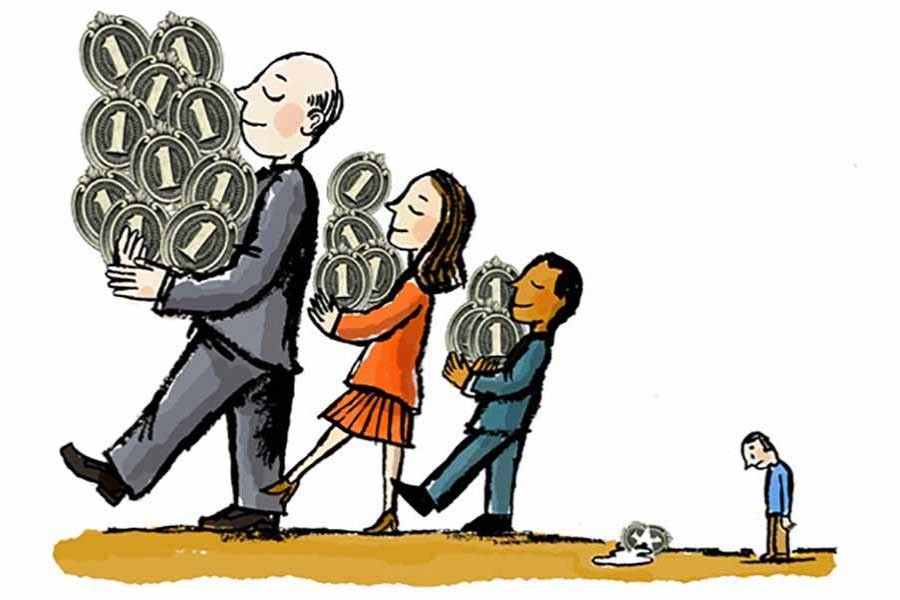This is really perplexing that Bangladesh has topped the list of countries that saw the quickest growth in the number of ultra-wealthy people between 2012 and 2017.
New York-based research firm Wealth-X, in its new report says the number of ultra-high net-worth (UHNW) individuals in Bangladesh rose by 17.3 per cent during the 2012-2017 period. Ultra-rich individuals have been defined as people with investible assets of at least $30 million. The survey usually excludes personal assets and property such as a primary residence, collectibles and consumer durables.
In terms of growth, Bangladesh is ahead of China, Vietnam, Kenya, India, Hong Kong, Ireland, Israel, Pakistan and the US. Although the US recorded the weakest growth in its ultra-wealthy population, it remained by far the leading country for ultra rich people in 2017.
Among the top 10 countries, China and Hong Kong have achieved the strongest gains in their ultra-wealthy populations over the past five years. In contrast, those of Japan, Canada, Italy and the UK have largely stagnated.
While the number of ultra rich population is growing in Bangladesh, the poor people are getting poorer. Income gap between the rich and the poor widened in the last six years though per capita income increased in the country.
A report of the Bangladesh Household Income and Expenditure Survey-2017 shows that Gini co-efficient, which is used to measure income inequality, increased to 0.483 at national level in 2016 from 0.458 in 2010 meaning that the rich became richer while the poor poorer during the period.
Income inequality in both rural and urban areas also widened during the period. Consumption inequality, however, remained almost stable during the last five years, says a Bangladesh Bureau of Statistics (BBS) survey. The country made significant achievement in poverty reduction in those years though the pace of poverty reduction slowed down.
There are reasons to believe that the inequality widened as the bigger portion of income went to the richer groups of people while the poor got a minor share. Lack of good governance, corruption, slower growth in employment and real wage also contributed to the widening income gap.
Another reason behind the widening inequality is slower growth in agricultural production along with higher growth in manufacturing and services sectors. Wealthier people and skilled manpower people get the big portion of income from the sector. The poor got small share of income as the share of agriculture in gross domestic product (GDP) growth declined.
Lack of good governance, quality employment, investment and problems in banking sectors and infrastructure also affected income distribution. The trend suggests that the economic development during the period was not poor-friendly.
Although the country is posting a good GDP growth and per capita income is growing too, it is lagging behind in poverty reduction. Policy interventions are needed to invest more in agriculture so that farmers can grow more rice in less land and also get better prices by growing non-rice high-value crops.
It is paradoxical that poverty reduction slowed at a time when Bangladesh's GDP and per capita income showed a modest growth. Question thus arises who are getting the benefits of such growth. Certainly, the richer sections of the people are the real beneficiaries.
The poor's share in the national income eroded further in the past six years. The poorest five per cent had 0.78 per cent of the national income in their possession back in 2010, and now their share is only 0.23 per cent. In contrast, the richest five per cent, who had 24.61 per cent of the national income six years back, now has a higher share -- 27.89 percent, to be precise.
Although, incomes from manufacturing and services have grown, employment growth has been weak. Thus labour income growth is weaker than the growth of GDP. As a result, the incomes of the poor, who have only their labour to live on, grew far slower than income growth of non-poor, leading to increase in income inequality.
The farm sector growth should be accelerated and the landless people be absorbed in more skilled areas of production. More investments should be made in farm research and development so that more crops are grown on less land.
As the expansion of safety-net programme is not achieving the desired result, its beneficiaries have to be chosen carefully. Besides, the country needs to invest in human capital development and put emphasis on the quality of education rather than quantity.
The trend that the ultra-rich people are getting wealthier is not a happy sign. The rich-poor gap must be reduced for meaningful growth of the country.


